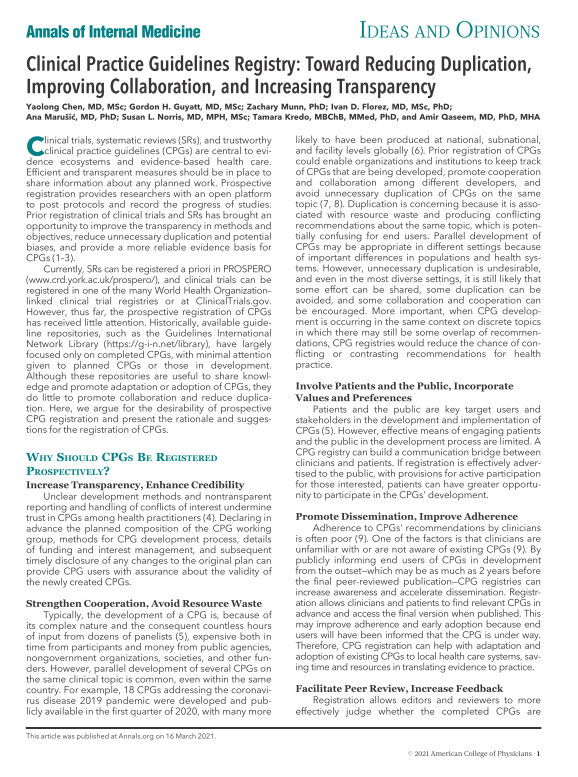RIGHT-COI&F can help guideline developers in how to report conflicts of interest and funding in a clear and transparent manner.
The Development of Reporting Guideline of clinical Practice Guidelines in General Practice provides detailed guidance for the makers and writers of the general practice guidelines, which will further improve the reporting quality of the general practice guidelines, especially the Chinese general practice guidelines, and promote the application in general medical practice, thus finally improving the quality of primary medical care.
Professor Gordon Guyatt of McMaster University and Professor Victor Montori of the Mayo Clinic jointly published a paper in the British Medical Journal (BMJ) entitled: Guidelines should consider clinicians' time needed to treat on January 3, 2023.
IGEST is a generic tool for screening guidelines for any specialty, target population, and healthcare organization, but it is intended only as a screening tool, primarily for quickly assessing guideline quality and determining whether they can be adopted or adapted in other settings, and is not a substitute for some of the more complex guideline quality evaluation tools.
In July 2022, Jose F. Meneses-Echavez et al. from the Norwegian Institute of Public Health published an article in the Journal of Clinical Epidemiology entitled "Evidence to decision frameworks enabled structured and explicit development of healthcare recommendations". The aim of this study was to identify and describe the processes suggested for the formulation of healthcare recommendations in healthcare guidelines available in guidance documents.

Guidelines Interpretation